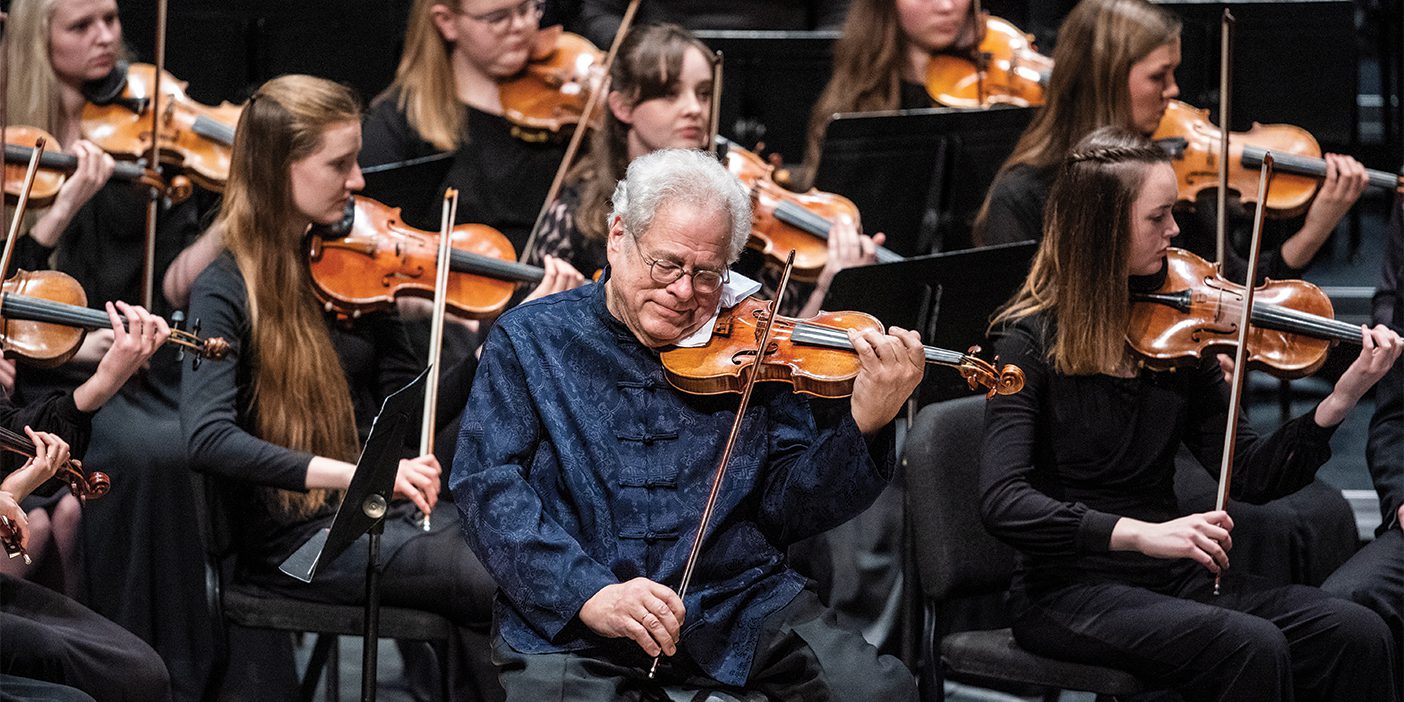
Once on a flight from Detroit to Salt Lake City, I daringly suggested to the woman next to me that we swap iPods. We’d begun to chat and were both eager to discover some new music. For the next few hours, we listened to and discussed each other’s favorites. I was elated to hear Bulgarian choirs and Czech bluegrass. Instantly, my world and its possibilities seemed to expand.
We tend to hole up in musical niches. We listen to what we like, and in a digital world, algorithms identify our listening preferences and stream us more of the same. Some families even ordain a single radio station or type of music (for example, hymns, classical, pop) as the sole acceptable option for the home or car.
But today myriad artists and thousands of genres and subgenres of music are available on demand, and two expert alumni, both BYU music professors, say we’d all benefit from expanding our individual and family playlists. The reasons go beyond swathes of research into music preference, which list benefits ranging from improving musical understanding to developing openness to new things.
“The value of exposure to different kinds of music is immense,” says Robert E. Dunn (BA ’77, BS ’86, MM ’89). “It gives more chances to experience music—to be drawn into it and moved by it.” For kids, in particular, an ever-expanding experience with music can shape the imagination and feed a young soul.
Professor Luke B. Howard (MA ’94) says he intentionally exposes his kids to different music genres “to mitigate the effect of fads, current fashion, and peer groups.” He says, “Music is such a powerful uniter of peer groups,” but that effect can also be limiting. Kids who listen to a variety of music “aren’t locked into identifying themselves in one particular way. [They can] love Mozart opera and like Taylor Swift.”
For me even poor sound and deep scratches in our family’s records did not diminish my wonder at Prokofiev’s Peter and the Wolf or Burl Ives’s folk songs on Little White Duck. My tiny transistor radio picked up Bay Area bands like Tower of Power and the Airplane. Through the wall of my bedroom, I could hear my older brothers cranking Lynyrd Skynyrd and CCR. From the family room, one could hear hymns or Brahms on the piano, my older sister and mom’s records from Broadway or film, and my dad’s Rachmaninoff and Sibelius. Decades later those early exposures to music still reverberate through my present listening experiences and shape how I see the world and my place in it.
If you want to cultivate expansive tastes in your kids, says Dunn, broad listening is fundamental. “People like what they’re exposed to. The more you hear something, the more you’ll like it,” he says. “So, for the early years, play all kinds of things. Don’t limit the home to one genre of music.”
Howard says understanding our tastes in music helps us understand ourselves. “We get a sense of who we are through our literal genealogy. . . . I encourage [people] to explore their musical genealogy as well. If you like this kind of music, whatever it is, ask, ‘How did I get that?’ The kind of music we listen to is an important part of our identity.”
Expanding Your Musical World
How to add new genres to your listening repertoire? Here are some suggestions:
• Talk to your kids about the music they listen to. Ask them what it is that appeals to them.
• Explore related or contiguous music genres. If you listen to folk, try blues or bluegrass. If you listen to reggae, try world music. If you like pop, try Broadway.
• Go to concerts together and occasionally try out genres unfamiliar to both parents and kids.
• If kids are closed to classical music, play their favorite movie soundtracks, which are usually symphonic.
• With an unfamiliar genre, focus on identifying the instruments, rhythms, or other conventions and compare them to those of other genres or styles.
• Ask questions about a piece of music after hearing it.












